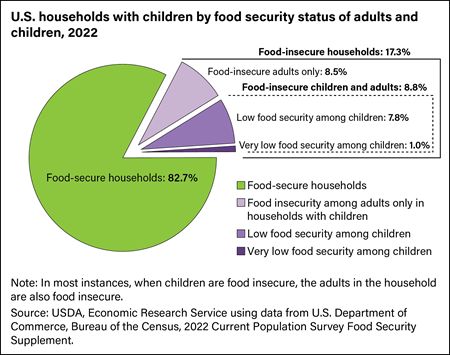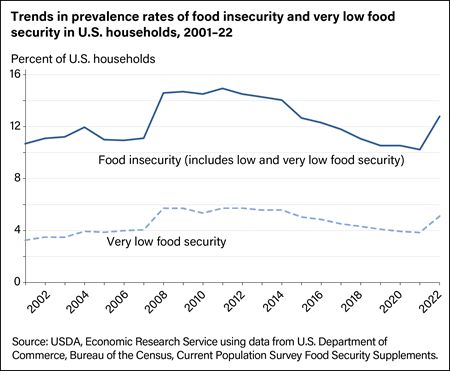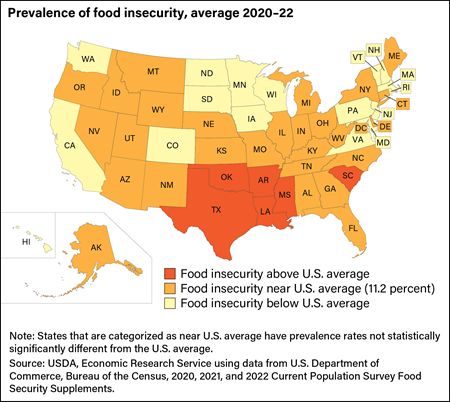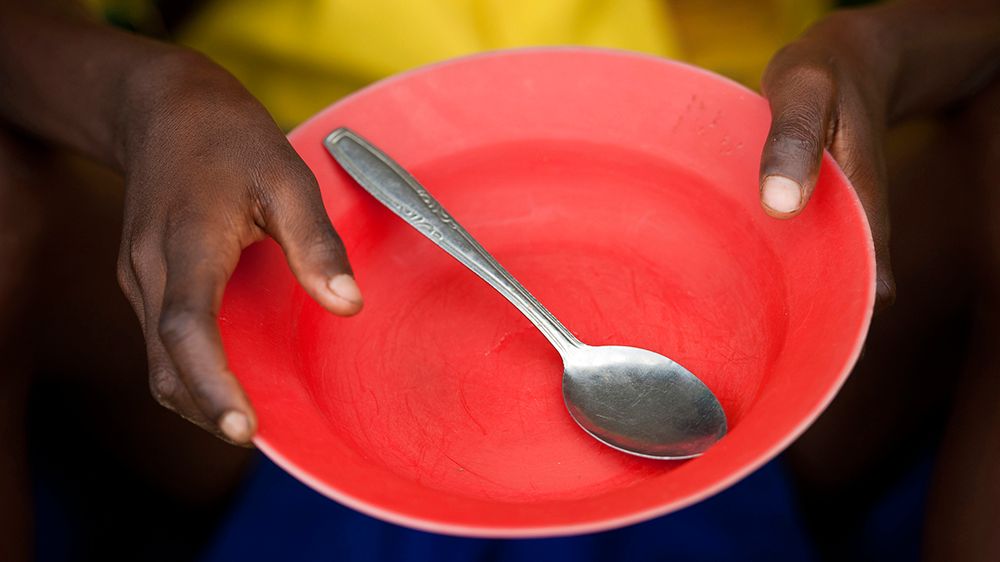TEXAS — Some American families are struggling to access and afford food, the pandemic and inflation worsening a problem that’s persisted for years. Approximately 12.8% of U.S. households, 17 million in all, were without enough sufficient funds and resources to put nutritious meals on their table in the past few years. The U.S. Department of Agriculture reports a significant increase in food insecurity in 2022 from 2021.
The USDA details that, “The 2022 prevalence of food insecurity (12.8%) was statistically significantly higher than the 2021 prevalence of 10.2 percent and significantly higher than the food insecurity prevalence observed from 2017 through 2020.”

According to USDA, Texas is the second-worst state for hunger with above average food insecurity between 2020 to 2022. Out of the nation, Dallas County is said to have had the fourth highest number of children with food insecurity in 2022, the North Texas Food Bank reports.
Along with Arkansas, Louisiana, Mississippi, Oklahoma and South Carolina, Texas has higher food insecurity than the national average, which is 12.8%.

“Estimated prevalence rates of food insecurity during this 3-year period ranged from 6.2 percent in New Hampshire to 16.6 percent in Arkansas; estimated prevalence rates of very low food security ranged from 2.1 percent in New Hampshire and North Dakota to 6.8 percent in South Carolina,” USDA reveals in its data.
While most U.S. households are food secure, the number of adults and children that are not is still disheartening and far too many. States are trying to make their way back to stable ground given the colossal blow to the country’s economy these past few years. But Texas and others are finding it hard to do so.
More and more households are having to either suffer through hunger or settle for cheap meals that have no sustenance. A lot of these families with food insecurity have to turn to food banks as a resource, but even then there’s only so much that can go around.
Feeding Texas says, "In Texas, nearly 1 in 6 households are food insecure. This means that more than 1.7 million families – including approximately 4.6 million Texans – are at risk for hunger."”

Thousands of people can’t even rely on SNAP benefits any more with the recent change in policy disqualifying many of them. Lower-income families are not the only ones affected by food insecurity.
“Though lower-income families have been hit hardest, even those with middle incomes are facing hunger: one-third of respondents (33%) with annual household incomes between $50,000 and $100,000 reported food insecurity and two-thirds (65%) worried about their ability to buy groceries if faced with an unexpected expense or the loss of two weeks income,” No Kid Hungry Texas said.
Many Texans depended upon that assistance, and must now search out other means to make ends meet and feed their family.
Republicans in Congress are pushing for provisions to the farm bill, a package that affects agricultural farming and aid requirements with more constraints. Many believe this would further harm communities suffering through food insecurity.
Twenty years ago, Texas food banks came together to stand against hunger in the state and implore lawmakers to enact change. Since then, the network has been up against many challenges, but they’ve also seen some bills pass in their favor. However, there’s still much work to be done to get meaningful results.
Editor's Note: Data from Feeding Texas was updated to represent new statistics on food insecurity in Texas that wasn't reflected on its site. (Corrected 11/03/2023)



